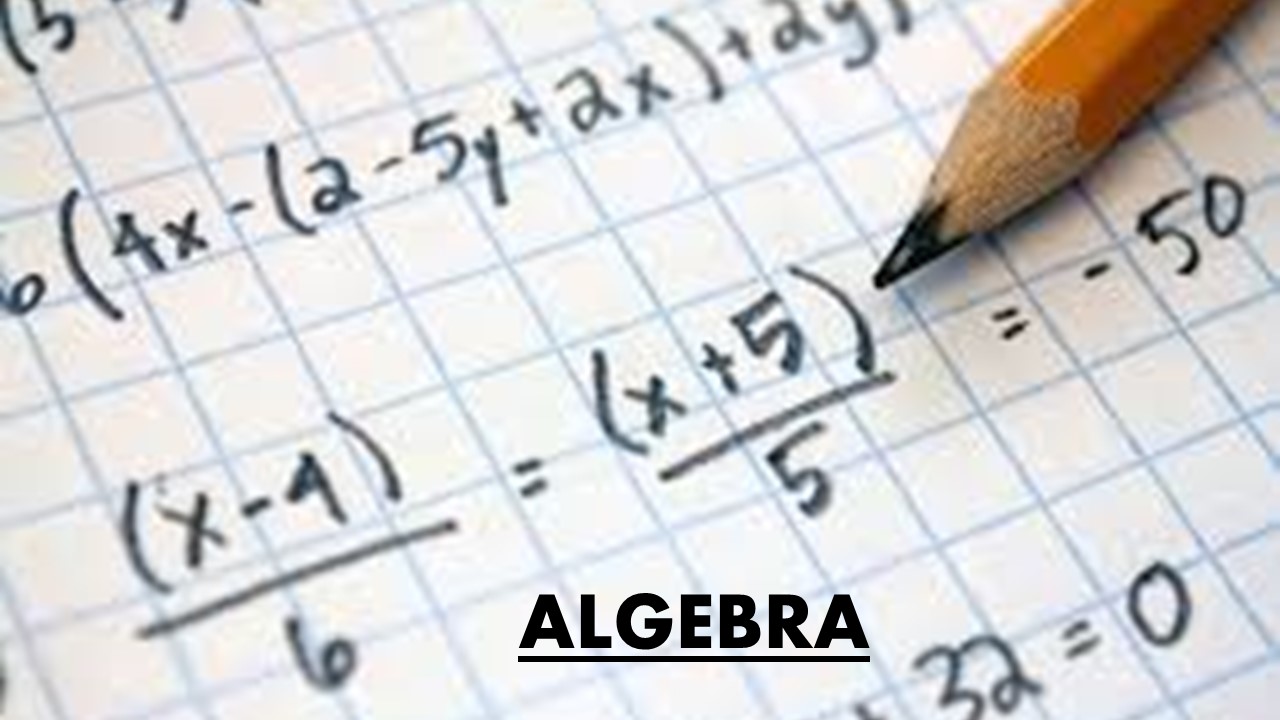Description
EXPANSIONS
Expansion is the act of expanding, mathematically speaking, it is removing all the brackets present in the expression. Usually in math, we encounter a few expression where they place two sets of two terms, both in brackets side by side like this (a+b)(a-b).This requiring removing of brackets and simplification.
FACTORIZATION
Factorisation or factoring is the decomposition of an object (for example, a number, a polynomial, or a matrix) into a product of other objects, or factors, which when multiplied together give the original.
For example, the number 15 factors into primes as 3 × 5, and the polynomial x^2 − 4 factors as (x − 2) (x + 2).
In all cases, a product of simpler objects is obtained. It is actually the opposite of expansion.
SIMULTANEOUS LINEAR EQUATION
System of simultaneous linear equations
A pair of linear equations in the same two variables forms a system of simultaneous linear equations. They are satisfied by the same pair of values of the two variables. Two linear equations can have either only one solution, no solution or infinite solutions.
INDICES
The index of a number is the number which shows how many times that number has occurred in the term as a repeated factor.
an implies that the number a is multiplied by itself n number of times, where n is a positive integer. ‘a’ is called the base and n is called the index or exponent or power.
LOGARITHMS
The logarithm of a positive real number b with respect to a positive base number a is the power n of a to which a must be raised to obtain.
Free
Free
Free access this course
-
LevelIntermediate
-
Last UpdatedJune 9, 2022
-
CertificateYes
Hi, Welcome back!
Material Includes
-
Live Interactive classes with in-class doubt solving
-
Weekly Test and Quiz with instant tracking for progress
-
Revision of the course after testing
-
Fortnightly Parents and Tutor interactions
-
Expert monitoring of student's learning progress
-
Daily communication over call, whatsapp and mail
-
3 hours on-demand video
-
4 downloadable resources
-
Access for entire Academic Year
-
Access on mobile and Desktop
-
Assignments and review of the same
-
Tests and Correction by Board paper checkers
-
Certificate of completion and Live tracking with Grade book
Course Duration:
0
Course level:Intermediate
Enrolled:0
About Course
In This Section we will learn the following chapters:
1.EXPANSIONS
2.FACTORIZATION
3.SIMULTANEOUS LINEAR EQUATION
4.INDICES
5.LOGARITHMS
Course Curriculum
EXPANSIONS
Expansion of Algebraic Equations using Formulae
-
47:11
-
04:00
-
30:00
-
QUIZ – EXPANSIONS – BASIC ALGEBRAIC EXPANSION
-
QUIZ – IDENTITIES EXPANSIONS
-
06:00
-
QUIZ – EXERCISE B – SIMPLIFY
-
QUIZ – EXPANSIONS – PRELIMINARY TEST
-
QUIZ – EXERCISE A – IDENTITIES
FACTORISATION
Finding the factors of an equation using formulae.
Factorisation by splitting the middle term
-
06:28
-
12:26
-
09:48
-
06:59
-
06:00
-
05:00
-
QUIZ – FACTORIZATION – INTRODUCTION
-
02:28
-
06:00
-
QUIZ – FACTORIZATION – FACTORIZE THE GIVEN TERMS
-
QUIZ – FACTORIZATION – SIMPLIFY
-
QUIZ – FACTORIZATION OF POLYNOMIAL
SIMULTANEOUS LINEAR EQUATION
Elimination method
Substitution Method
Cross multiplication Method
Numerical Problems
-
00:57
-
QUIZ – WORD PROBLEMS
-
QUIZ – METHOD OF ELIMINATION BY EQUATING COEFFICIENTS
-
QUIZ – PROBLEMS BASED ON SIMULTANEOUS EQUATIONS
-
QUIZ – SIMULTANEOUS LINEAR EQUATION – SOLVE THE FOLLOWING SIMULTANEOUS LINEAR EQUATION
-
QUIZ – SIMULTANEOUS LINEAR EQUATION – ELIMINATION
LOGARITHMS
Interchanging between Logarithmic form and Exponential Form
Laws of Logarithm and its uses
Expansion of an expression using LAWS OF LOGARITHM
log y = 4 log a + 2 log b – 3 log c
INDICES
Handling positive, fractional, negative and “zero” indices.
Simplification of expressions involving various exponents
Use of laws of exponents
-
06:00
-
QUIZ – LAWS OF INDICES
-
04:00
-
QUIZ – SOLVING EXPONENTIAL EQUATIONS
Student Ratings & Reviews

No Review Yet


